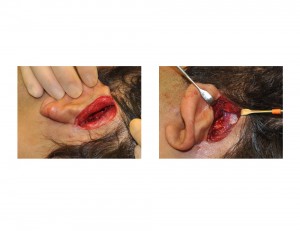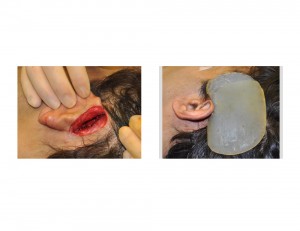Augmentation of the face through a variety of implants has been around for along time. Implant augmentation above the face on the skull bones is almost unheard of. Skull augmentations are much less commonly done, not only because they are less frequently requested, but because they are no implants made for them and surgical techniques taught to do them.
Some people have abnornally narrow skull shapes with the temporal region above the ears (what I call the posterior temporal zone) being non-convex. The typical aesthetics of the posterior temporal zone is to have some convexity due to the shape of the bone and the thickness of the muscle. When the temporalis muscle is thin or the shape of the posterior temporal bone is more linear than convex, the side of the head can look very narrow. This becomes most manifest in men with short cropped hair or who shave their heads. Although I have seen patients who have substantial hair cover who are equally bothered by it.
A head widening or posterior temporal implant is a very effective implant augmentation of this area. The implant can be placed either in the subfascial or submuscular location depending upon the incisional access. A vertical incision directly in the side of the head provides direct and easy access to subfascial placement of the implant. However such an incisional approach introduces potential scar concerns particularly with little to no hair color.


Posterior or head widening temporal implants can be placed through a postauricular incision into a submuscuar pocket. The implant usually does not need to be greater than 5mm to 7mms to great a substantial head width change when done on both sides of the head.
Dr. Barry Eppley
Indianapolis, Indiana



